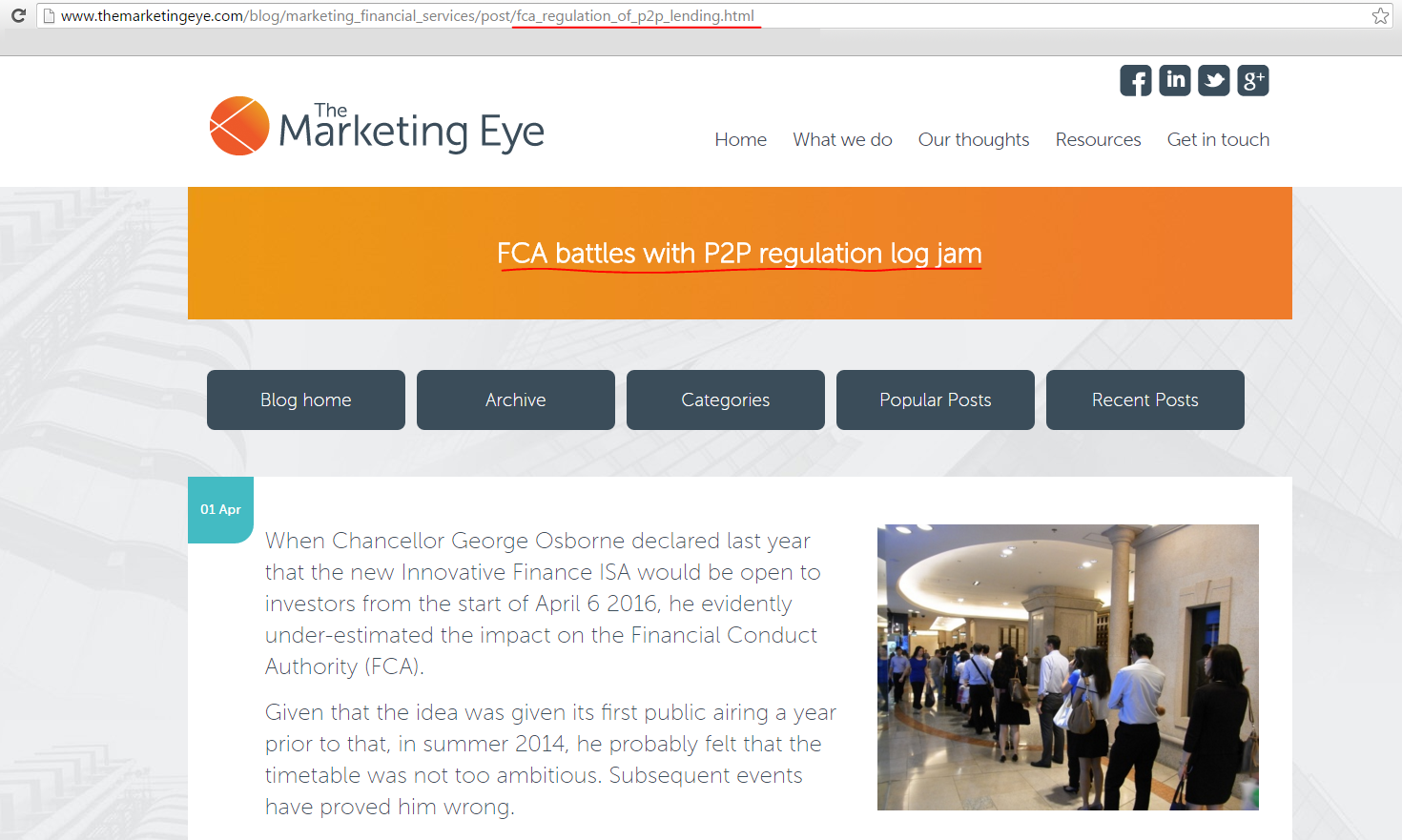Are you forgetting these eight easy search ranking essentials?
Are you forgetting these eight easy search ranking essentials?
When a need or query arises, online search engines are usually the first port of call. As a result, we are often asked by businesses why their web content isn’t appearing at the top of search rankings, and what can be done about it. Therefore, I thought I would go back to basics and reintroduce eight known steps to improving your search rank.
Step 1: Keywords in the page title
A nice and easy one to start. Ensure that your keywords are in the page title. If your content is on the subject of the ‘FCA and the P2P sector’, then make sure your title includes the keywords ‘P2P’ and ‘FCA’.

Step 2: Keywords in URLs
Another straightforward one. Make sure the keywords from your page title are in the URL of your page.

You see, I said this was easy.
Step 3: ALT text on images
How often do you upload an image to your website and just call it ‘image 1’ and ‘image 2’? I bet it is quite often. Don’t be lazy when adding images to your content. Labelling images correctly is just as important a ranking metric as your written content. Remember, you might not rank high on a generic Google Search, but you might on a Google Images search (other search engines are available!).
Step 4: Internal and External linking
Hyperlinking to relevant links within your website will help build the trustworthiness of your site and is a great way of driving traffic to other sections of your website. Don’t go overboard though. The key to performing well with modern search engines is relevancy. They know when you just trying to con the system. You should also think about linking to external websites as well, this tells Google that you have done your research and you know what you’re talking about. For example, this user guide from HubSpot on understanding keywords was a great source of knowledge for helping to cultivate this blog post.
Step 5: Fresh content
It is important to keep your content regularly updated and fresh. A continuous pursuit of new and exciting content will add to your reputation as a place with useful content and therefore aid your overall authority with Google.
Step 6: Mobile friendly
This is essential. An update to Google and the subsequent panic that ensued last year should mean you have taken care of this one. If you are not sure, double check here.
Step 7: Long tail keywords
Let’s face it, you are not going to rank very highly for generic keywords such as finance, or business finance, so don’t try. In an ideal world, you want to try and find keywords that have a high search volume, but low competition, and these will usually come in the form of long tail keywords. For example, ‘alternative finance for the manufacturing industry’.
Step 8: Just write
Lastly, and most importantly, just write. Don’t try and overthink or write in a way that tries to trick Google – it’s too clever for that. The seven steps above are what you should be doing anyway, so just concentrate on writing a clear and concise piece that your target audience will find interesting and relevant, and the rest should take care of itself.
The above eight steps are an important checklist to keep in your back pocket when creating content for your website. Following these steps should result in a steady climb up the search engine charts and well on your way to platinum success.
Not doing it right? If you think you could be doing a better job at optimising your content, why not get in touch with us for a full SEO review of your website. Alternatively, if you are looking to launch a new website and want to get off on the right foot, we can help with that as well.
Related Reading

Blog: 2 Marketing Automations You Should Set Up Today
by Darren Coleshill, 3 minute read

Blog: Don’t Ignore Mobile Users: Why Mobile-Friendly Design Is Crucial for Your Business
by Darren Coleshill, 4 minute read